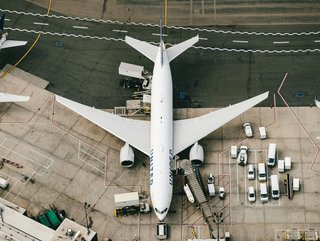Key Learnings from the IATA’s Aviation Net Zero Review

It’s hard to argue with anyone asserting that achieving net zero carbon emissions by 2050 is the foremost challenge facing the aviation industry.
In 2021, the aviation sector made a landmark decision to pursue net zero, a commitment which was echoed by member states of the International Civil Aviation Organization (ICAO) a year later.
Meeting this ambitious target necessitates a multifaceted approach encompassing transitions in aviation energy, advancements in aircraft technology, operational enhancements, market-based mechanisms and supporting policies.
Uncertainty dictates there won’t be a universal path for the industry to reach its ultimate goal, which is why various organisations have developed their own unique roadmaps. What’s more numerous academic studies on transitioning aviation to net zero have been published in esteemed scientific journals.
In a bid to provide a comprehensive assessment of 14 prominent net-zero transition frameworks tailored specifically for the aviation sector, the International Air Transport Association (IATA) has been working on the Aviation Net Zero CO2 Transition Pathways Comparative Review.
The final product has been developed in collaboration with the Air Transportation Systems Laboratory at University College London (UCL), the Air Transport Action Group (ATAG), the International Council on Clean Transportation (ICCT) and the Mission Possible Partnership (MPP).
A one-stop shop for aviation
The IATA’s report is aimed at providing a one-stop shop for airlines, policymakers and other stakeholders to better understand the key similarities and differences between 14 leading net zero transition roadmaps for aviation, as well as their visions for achieving net zero by 2050.
Specifically, the report compares selected roadmaps in terms of their scope, key input assumptions, modelled aviation energy demand, respective CO2 emissions and the emissions reduction potential of each mitigation lever (new aircraft technologies, zero-carbon fuels, sustainable aviation fuel (SAF) and operational improvements).
“The Aviation Net Zero CO2 Transition Pathways Comparative Review demonstrates that there are multiple levers that can be used in different combinations to achieve the objective of decarbonizing aviation by 2050,” comments Marie Owens Thomsen, SVP Sustainability and Chief Economist at the IATA.
“All these levers will be needed in aviation’s transition. While the impact of each varies across the roadmaps, all roadmaps expect the greatest decarbonisation in 2050 to stem from SAF.

“This report provides airlines, policymakers and all stakeholders with a useful tool to analyse and improve their policy, investment and business choices. It’s particularly important for SAF, where strong and urgent public policy support is needed to increase production. Without that, no version of the roadmaps will get us to net zero by 2050.”
Key findings from the IATA’s review
- Possible pathways to net zero emissions by 2050 differ significantly depending on the key assumptions of the authors regarding how decarbonisation technologies and solutions may evolve. Depending on these assumptions, the resulting role of particular levers in aviation’s decarbonisation will be more or less important.
- All roadmaps assume SAF will be responsible for the greatest amount of CO2 reductions by 2050. The role of SAF varies from 24% to 70%, with a median value of 53%. This wide range reflects the uncertainties regarding potential supportive government action, level of investment, cost of production and profit potential, as well as access to feedstocks.
- Technology and operational efficiency improvements are expected to have a similar role in the net-zero transition across the roadmaps, together contributing to about 30% of the emissions reduction in 2050 in all scenarios.
- The estimated emissions savings by hydrogen and battery-powered aircraft vary greatly across the roadmaps, depending on whether a strong pro-hydrogen policy is adopted and on whether there is a rapid decline in renewable energy prices, enabling swifter uptake of electricity-based technologies.
- To achieve net zero by 2050, almost all global roadmaps suggest the aviation sector will need help from market-based measures and carbon removals to address residual emissions. Even if carbon removal technologies are considered an ‘out-of-sector’ mitigation measure, it is still both urgent and critical to develop these technologies as CO2 will be needed as feedstock for producing power-to-liquid (PtL) fuels.
******
Check out the latest edition of Supply Chain Magazine and sign up to our global conference series – Procurement and SupplyChain LIVE 2024.
******
Supply Chain Digital is a BizClik brand.
- Argon & Co: The EU Ban Forcing a Supply Chain RethinkSupply Chain Risk Management
- RELEX: Preventing Food Waste with Improved Demand PlanningSustainability
- Procurement & Supply Chain LIVE New York: Day 1Sustainability
- Boeing, DHL Group Among Firms Signed up to IATA SAF RegistrySustainability






